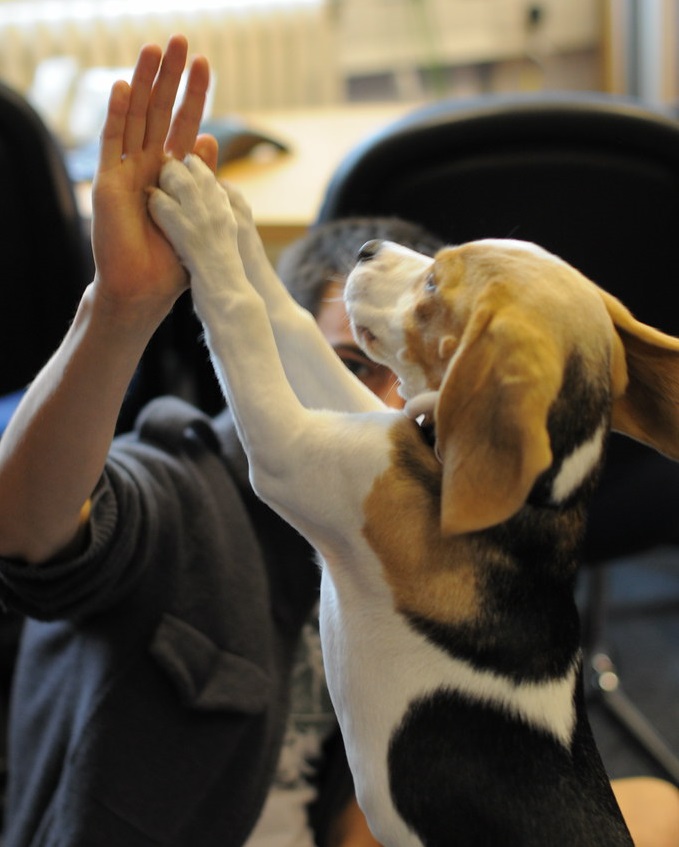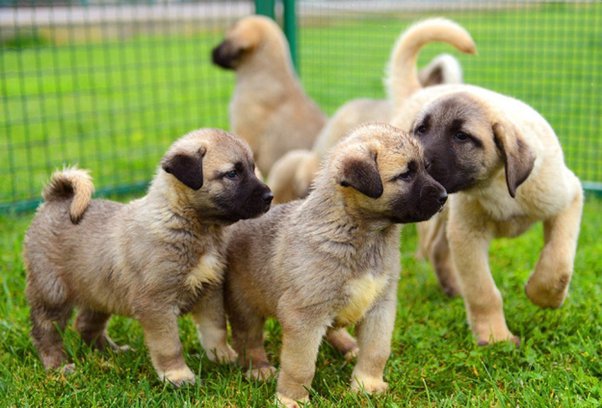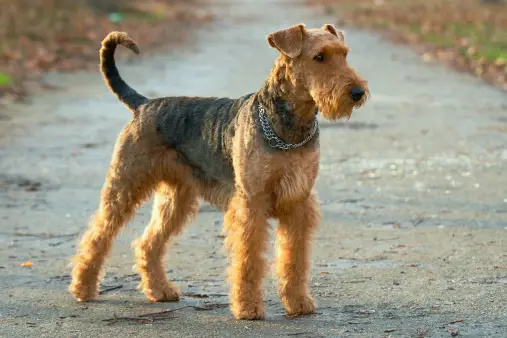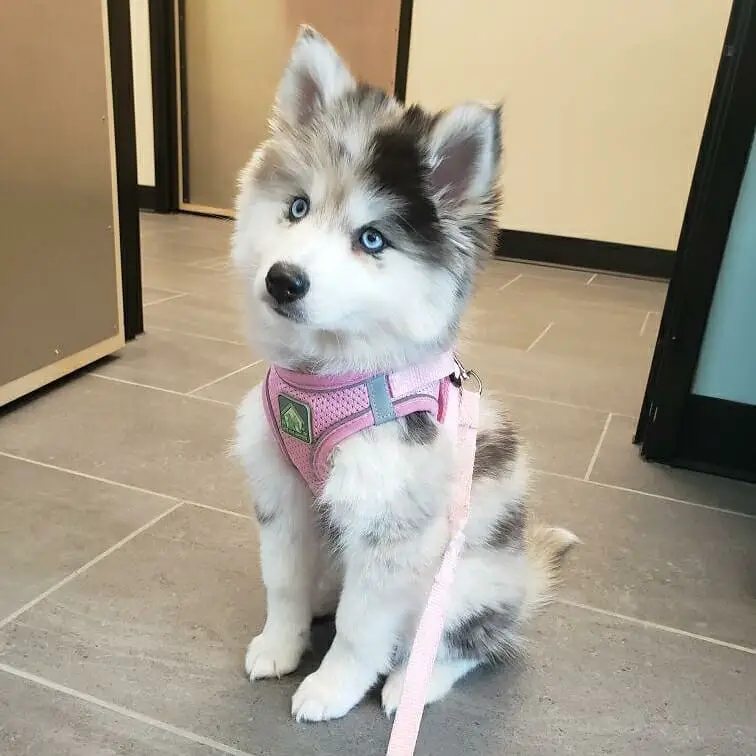This step-by-step guide is here to help you teach your dog essential commands such as “come,” “shake hands,” and “high five.” Whether you’re a beginner or have some experience in dog training, this article will provide you with clear instructions and valuable tips to make the training process effective and enjoyable for both you and your pup. Get ready to strengthen the bond with your canine companion and create a well-behaved and obedient pet.
Step-by-Step Guide to Dog Training: Come, Shake Hands, and High Five
Step 1: Establishing a Positive Reinforcement
Positive reinforcement is a fundamental aspect of dog training. By using rewards and praise, you can encourage your dog to repeat desired behaviors. Here are some tips to establish a positive reinforcement:
- Use treats: Choose small, tasty treats that your dog loves. These treats will serve as a motivator during the training process.
- Be consistent: Set clear rules and expectations for your dog. Consistency is key to ensure your dog understands what behaviors are rewarded.
- Timing is crucial: Immediately reward your dog when it performs the desired behavior. This reinforces the connection between the action and the reward.
Step 2: Teaching the ‘Come’ Command
The ‘come’ command is essential for your dog’s safety and control. Follow these steps to teach your dog this important command:
- Find a quiet and distraction-free area: Start the training in an environment where your dog can focus solely on you.
- Use a long leash: Attach a long leash to your dog’s collar to ensure control during the training.
- Say the command and reward: Say “come” in a clear and cheerful tone. Use the leash to guide your dog towards you. Once your dog reaches you, provide a treat and praise.
- Repeat and increase distance: Practice the ‘come’ command in various locations, gradually increasing the distance between you and your dog. Remember to reward and praise each successful response.
Step 3: Teaching the ‘Shake Hands’ Command
Teaching your dog to shake hands is a fun and impressive trick. Here’s how you can do it:
- Prepare treats: Have a handful of treats ready to reward your dog during the training.
- Offer your hand: Extend your hand towards your dog, palm facing up. Use a verbal cue such as “shake” or “paw.”
- Wait for a paw response: Be patient and wait for your dog to lift its paw towards your hand. Reward and praise immediately once your dog makes contact.
- Repeat and add command: Continue practicing the ‘shake hands’ command, gradually adding the verbal cue before offering your hand. With time, your dog will associate the command with the action.
Step 4: Teaching the ‘High Five’ Command
The ‘high five’ command is a playful trick that can impress your friends and family. Follow these steps to teach your dog this trick:
- Sit in front of your dog: Position yourself in front of your dog and grab some treats.
- Raise your hand: Extend your hand towards your dog at chest level, palm facing forward.
- Encourage a paw response: Use a verbal cue like “high five” and wait for your dog to touch your hand with its paw. Reward and praise immediately.
- Practice and reinforce: Repeat the ‘high five’ command, gradually reducing the height of your hand until your dog can perform the trick with a raised paw.
By following this step-by-step guide, you can successfully train your dog to come, shake hands, and high five. Remember to be patient, consistent, and always reward your dog’s efforts. Happy training!
Step 1: Establishing a Positive Reinforcement
Understanding Positive Reinforcement
Positive reinforcement is a powerful training technique that involves rewarding desired behaviors in order to encourage their repetition. It focuses on using rewards such as treats, praise, or play to motivate dogs to learn and obey commands. By associating positive experiences with specific behaviors, dogs are more likely to engage in those behaviors again.
To effectively use positive reinforcement, it is important to understand the timing and consistency of rewards. Rewards should be given immediately after the desired behavior occurs, so the dog can easily connect the behavior with the reward. Consistency is key to reinforce the desired behavior consistently, as sporadic rewards may confuse the dog and hinder the learning process.
Setting Up a Reward System
To establish a successful reward system, you need to determine what motivates your dog. Some dogs are food-driven, while others respond better to praise or play. Once you know what your dog loves, you can choose appropriate rewards to reinforce their good behavior.
It is essential to use high-value rewards when initially teaching a new behavior. These rewards should be something your dog finds extremely enticing, as it will increase their motivation to learn and perform the desired action. As your dog becomes more proficient, you can gradually reduce the frequency of rewards and replace them with intermittent reinforcement to maintain the behavior.
Remember to keep the rewards consistent and predictable. This will help your dog understand that certain actions lead to positive outcomes, making training more effective and enjoyable for both of you.
Creating a Positive Training Environment
Creating a positive training environment is crucial for successful dog training. Here are some tips to ensure a positive atmosphere for your furry friend:
- Choose a quiet and distraction-free area: Find a peaceful place where your dog can focus on the training session without being easily distracted. This will enhance their ability to learn and respond to commands.
- Use positive body language and tone of voice: Dogs are highly perceptive to their owner’s body language and tone of voice. Use a calm and friendly tone, combined with positive gestures like smiling and open posture, to convey a safe and encouraging environment.
- Patience and consistency: Dogs learn at their own pace, so it is important to be patient and consistent. Repeat commands and reward good behavior consistently, gradually increasing the difficulty level as your dog progresses.
- Avoid punishment: Punishment can create fear and anxiety in dogs, hindering their learning process. Instead, focus on positive reinforcement, rewarding desired behaviors, and redirecting unwanted behaviors.
By establishing a positive reinforcement system and creating a supportive training environment, you are laying the foundation for a successful dog training journey. Remember to be patient, consistent, and always celebrate your dog’s progress along the way.
Step 2: Teaching the ‘Come’ Command
Choosing a Cue Word
When teaching your dog the ‘come’ command, it is important to choose a cue word that is clear and easy for your dog to understand. It is recommended to select a simple word that is not commonly used in everyday conversations, such as “here” or “come”. By using this cue word consistently, your dog will quickly associate it with the action of coming to you.
Using a Long Line
To ensure your dog’s safety and prevent them from running off during the training process, it is beneficial to use a long line. A long line is a leash that is longer than the standard leash, usually ranging from 15 to 30 feet in length. By attaching the long line to your dog’s collar or harness, you can give them more freedom to explore while still maintaining control. This allows you to practice the ‘come’ command in a controlled environment and gradually increase the distance between you and your dog.
Reinforcing the Behavior
Consistent reinforcement is key to successfully teaching your dog the ‘come’ command. Start by calling your dog using the cue word while gently pulling on the long line to guide them towards you. As soon as your dog starts moving towards you, praise them enthusiastically and offer a treat or a reward. It is important to reward your dog immediately after they respond to the command to reinforce the behavior and make a positive association.
Remember to consistently practice the ‘come’ command in various environments and gradually reduce the reliance on the long line as your dog becomes more reliable. With patience, consistency, and positive reinforcement, your dog will eventually master the ‘come’ command and respond to your cue word every time.
Step 3: Teaching the ‘Shake Hands’ Command
Introducing the ‘Shake Hands’ Cue
Introducing a new cue, such as the ‘Shake Hands’ command, is an exciting part of dog training. This cue teaches your furry friend to offer their paw for a handshake. It’s not only a fun trick but also a great way to strengthen the bond between you and your dog. Follow these steps to successfully introduce the ‘Shake Hands’ cue:
- Start with a calm and distraction-free environment. This will help your dog focus and learn more effectively.
- Hold a treat in your closed hand, making sure your dog can smell it but cannot access it. This will grab their attention and pique their curiosity.
- Extend your closed hand towards your dog, allowing them to sniff and investigate it. As they sniff and touch your hand with their nose or paw, use a verbal cue such as “Shake Hands” in a clear and enthusiastic tone.
- As soon as your dog makes any contact with their paw on your hand, praise them and immediately reward them with a treat. This positive reinforcement will associate the action with the cue and encourage them to repeat it.
- Repeat this process several times, gradually adding the verbal cue earlier in the sequence until your dog starts offering their paw without needing to sniff or investigate your hand.
Using Hand Targeting
Hand targeting is a useful technique that can aid in teaching your dog the ‘Shake Hands’ command. It involves getting your dog to touch or target their nose to your hand. By using this method, you can guide your dog’s paw towards your hand, making it easier for them to understand the desired behavior. Here’s how you can incorporate hand targeting into the training process:
- Present your hand, palm open and fingers together, at your dog’s nose level.
- When your dog investigates your hand and touches it with their nose, use the verbal cue “Touch” or “Target” in an encouraging tone.
- As soon as your dog touches your hand with their nose, praise them and reward them with a treat.
- Repeat this process, gradually moving your hand slightly higher or to the side to encourage your dog to follow it with their nose.
- Once your dog is consistently targeting your hand with their nose, you can start using the ‘Shake Hands’ cue while presenting your hand for targeting. This helps your dog associate the hand targeting behavior with the specific cue.
Rewarding the Desired Behavior
Rewarding the desired behavior is crucial in dog training as it reinforces positive actions and motivates your furry friend to continue learning. When teaching the ‘Shake Hands’ command, it’s essential to reward your dog for their progress and correct responses. Here are some tips on how to effectively reward the desired behavior:
- Use high-value treats that your dog finds particularly appealing. This could be small pieces of cooked chicken, cheese, or any other favorite treat. The more enticing the reward, the more motivated your dog will be to perform the desired behavior.
- Be prompt with your rewards. Timing is key in dog training. As soon as your dog offers their paw or completes the desired behavior, praise them enthusiastically and provide the treat immediately. This helps them make the connection between the action and the reward.
- Incorporate verbal praise along with treats. In addition to treats, use positive reinforcement through words. Applaud your dog, use an excited and happy tone, and say phrases like “Good job!” or “Well done!” This verbal praise strengthens the association between the cue, the action, and the reward.
- Vary the rewards. While treats are highly effective, it’s essential to mix in other forms of rewards, such as playtime or affectionate pats. This ensures that your dog doesn’t become solely reliant on treats and remains motivated by different types of reinforcement.
Remember, patience and consistency are key when training your dog. By following these steps and providing positive reinforcement, you’ll soon have your furry friend confidently shaking hands on command.
Step 4: Teaching the ‘High Five’ Command
Introducing the ‘High Five’ Cue
Introducing the ‘High Five’ cue to your dog can be a fun and interactive way to further enhance their training. This command not only strengthens the bond between you and your furry friend but also adds a touch of entertainment to their repertoire of skills. Here are some steps to help you introduce the ‘High Five’ cue:
- Begin by ensuring that your dog is familiar and comfortable with basic commands such as ‘sit’ and ‘shake hands.’ This will provide a foundation for teaching the ‘High Five’ command.
- Hold a treat in your hand and place it in front of your dog’s closed paw. Use a verbal cue such as “High Five” or “Give me five” to associate the action with the command.
- Wait patiently for your dog to paw at your hand. As soon as they make any contact with their paw, reward them with praise and the treat. Repeat this several times until your dog starts to associate the verbal cue with the action of pawing at your hand.
Shaping the Behavior
Once your dog understands the basic concept of the ‘High Five’ command, it’s time to shape their behavior to ensure consistency and accuracy. Follow these steps to shape your dog’s behavior for the ‘High Five’ command:
- Hold your hand slightly higher each time you present it for the ‘High Five’ command. This will encourage your dog to lift their paw higher in response.
- Gradually reduce the amount of physical contact between your hand and your dog’s paw. Start by slightly moving your hand away from their paw while still providing the verbal cue. Over time, your dog will learn to raise their paw without needing physical guidance.
- Practice the ‘High Five’ command in different locations and with distractions. This will help your dog generalize the command and perform it reliably in various situations.
Adding Verbal Command
To solidify your dog’s understanding of the ‘High Five’ command, it’s essential to add a verbal cue that will serve as a prompt for the action. Follow these steps to add a verbal command:
- As your dog raises their paw for the ‘High Five’ command, introduce a specific verbal cue such as “High Five” or “Give me five.” Say the cue just before your dog performs the action.
- Repeat this process consistently, ensuring that the verbal cue is always given before your dog’s paw makes contact with your hand. This will help them associate the command with the action.
- Gradually phase out the physical hand gesture and rely solely on the verbal cue. Your dog should now be able to respond to the verbal command alone.
Remember, patience and positive reinforcement are key when teaching your dog the ‘High Five’ command. With consistent practice and rewards, your furry friend will soon be impressing everyone with their paw-shaking skills!
In conclusion, the step-by-step guide to dog training provided in this article offers a comprehensive approach to teaching your furry friend essential commands like “come,” “shake hands,” and “high five.” By following these techniques and being patient and consistent in your training efforts, you can establish a strong bond with your dog and ensure their obedience and good behavior. Remember, training is an ongoing process, so it is essential to continue reinforcing these commands throughout your dog’s life. With dedication and love, you can successfully train your dog to be well-behaved and obedient, making them a joy to be around for both you and others.







